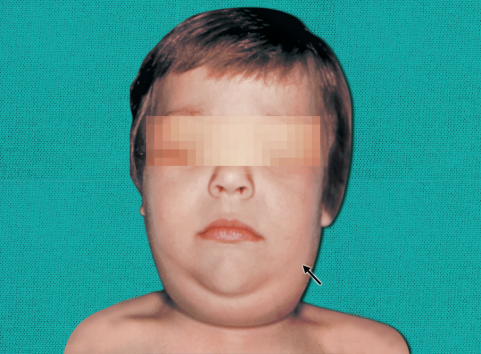MUMPS

Mumps virus is the most common cause of parotid gland
enlargement in children. In severe cases, it can also cause
orchitis and aseptic meningitis.
Pathogenesis
Transmission is through the respiratory route via
droplets, saliva, and fomites
Primary replication occurs in the nasal mucosa or
upper respiratory mucosa → infects mononuclear cells
and regional lymph nodes → spills over to bloodstream
resulting in viremia → dissemination
Target sites: Mumps virus has a special affinity for
glandular epithelium. The classic sites include salivary
glands, testes, pancreas, ovaries, mammary glands and
central nervous system.
Clinical Manifestation
Incubation period is about 19 days (range, 7–23 days)
Inapparent infection: Up to half of the infected people are either asymptomatic or present with non-specific symptoms such as fever, myalgia and anorexia. This is more common in adults than in children
Bilateral parotitis: Acute non-suppurative parotid gland enlargement is the most common specific manifestation, present in 70–90% of the cases (Fig. 66.6)
Rarely, parotitis may be unilateral
In some cases, other salivary glands may also be
involved.

Epididymo-orchitis is the next most common manifestation of mumps, developing in 15–30% of cases in postpubertal males. Orchitis is unilateral in most of the cases, hence infertility following mumps orchitis is rare
Aseptic meningitis occurs in less than 10% of cases, with
a male predominance. It is self-limiting condition except
the deafness (due to cranial nerve palsy) which may be
permanent
Oophoritis occurs in about 5% of women
Pancreatitis occurs in 4% of infections and may lead to
diabetes
Atypical mumps: Parotitis may be absent in 10% of cases
and patients directly present with aseptic meningitis


